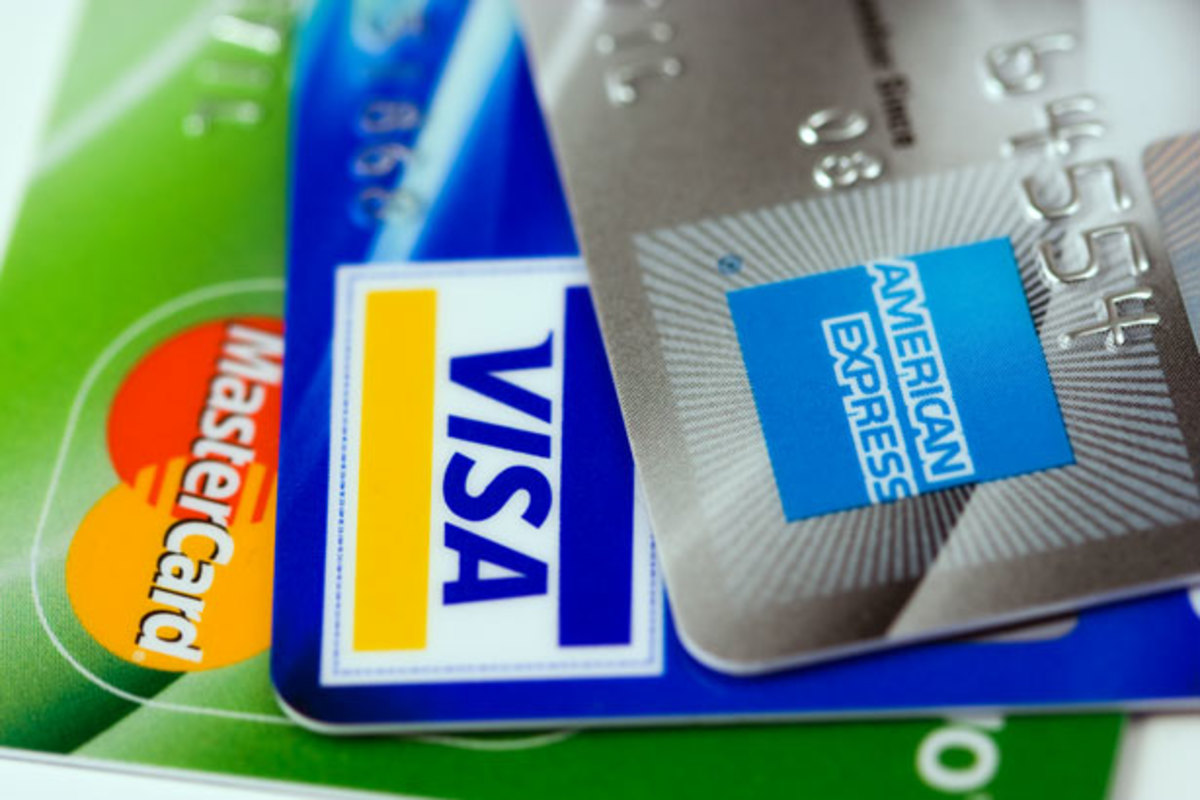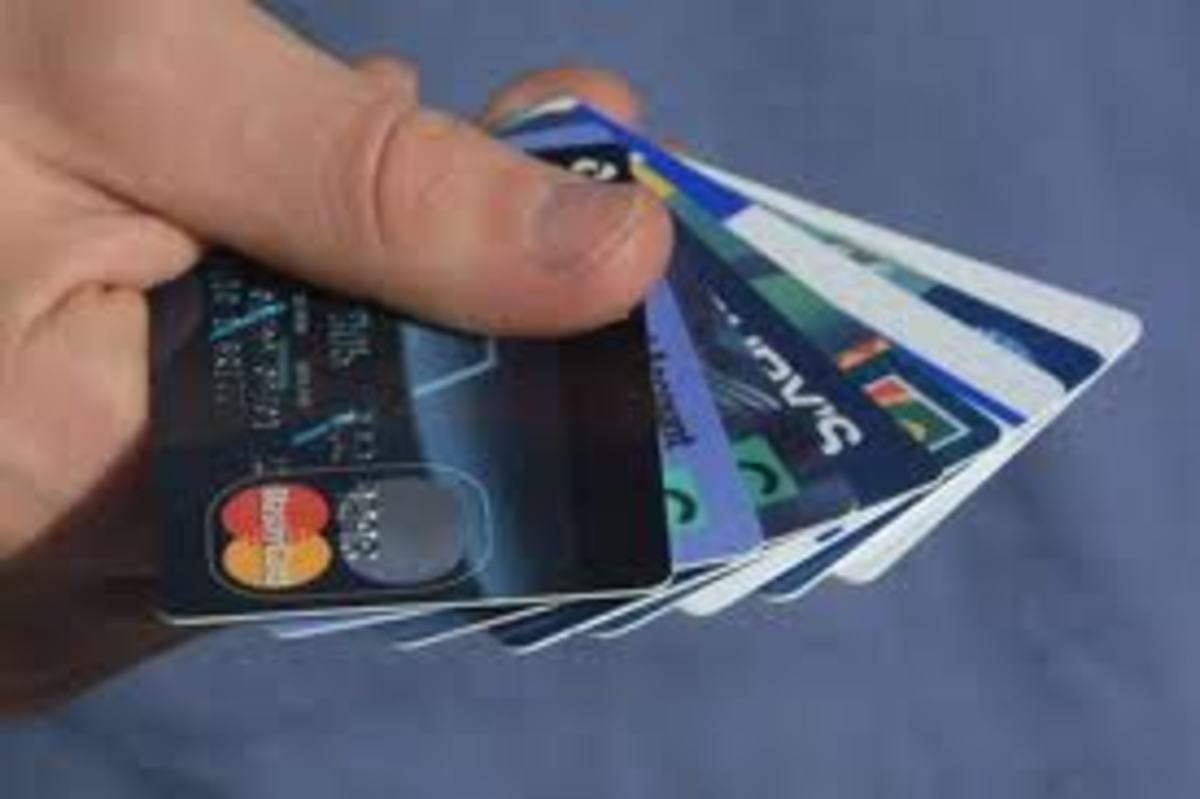Returns and Chargebacks Explained
It’s important to understand the relationship between returns and chargebacks. Both are ways for customers to get their money back, but the processes involved are very different.
What Exactly are Returns and Chargebacks?
If a customer is dissatisfied with your product, either they will simply ask you for their money back (a Return) or they will ask their credit card company to reverse the transaction and credit their account (a Chargeback).
In addition, as online businesses are necessarily based upon “customer-not-present” transactions, there is an increased likelihood of chargebacks due to fraudulent credit card transactions.
With returns, customers will ask you directly for their money back. Assuming you agree, you will need to put through a reversing transaction to balance out the initial payment.
There are two types of return:
1. Downloaded information products
The simplest returns occur for downloaded information products where a guarantee has been offered and the customer wishes to return the product before the guarantee expires. In this case, the customer doesn’t have to physically return the product.
30-day full money back guarantees are common for these products but quite often the guarantees will be extended to 60 or 90 days, or more, when the vendor wants to encourage a prospective customer to purchase the product. Extending the guarantee period also gives the customer additional time to use the product and be satisfied with it and even to forget about it altogether. Either way, extending the guarantee period helps to reduce return rates.
2. Physical products that have been shipped to the customer
Where a product has been physically delivered, it is standard practice for the customer to physically return the product (in the same condition as received by the customer) prior to receiving a refund. Depending on the value of the merchandise, this in itself could result in fewer returns. For example, to return a set of CDs costing $50 will involve a certain amount of re-packaging and handling that many customers simply won’t bother doing, in spite of the fact that they’d like to get their money back.
If a merchant is in a position of having to refund money to a customer, a direct returns policy is a straightforward and efficient way of doing it. Returning should, wherever practical, be the preferred vehicle for refunding money in place of chargebacks.
Chargebacks occur when customers contact their credit card provider, rather than the merchant, in order to get money back for a purchase that has been made on their credit card.
One simple way of reducing chargebacks is to increase the availability and ease of returns. If customers are not satisfied with your product or service, then allowing them to return it is a simple and cost effective way of refunding the money. Whether or not you provide this sort of guarantee depends, of course, on the type of product or service. It is common for information products to offer full money-back satisfaction guarantees. By offering an extended guarantee period, you will come close to eliminating dissatisfaction-based chargebacks altogether.
However, consider the case of more expensive and select items, or of services that take time and effort to render. Where returning is not an option, customers have no choice but to utilize the Chargeback route if they want their money back. In such cases, you must make every effort to keep customers satisfied and, when not, emphasize that the money paid is NOT refundable.
Chargebacks and Credit Card Providers
Chargebacks are considered the scourge of the credit card payment world. As a business, you think you’ve been successful with a sale only to find that the payment is going to be reversed through a chargeback, sometimes months after the initial transaction has taken place.
Apart from the additional charges imposed by the credit card provider, which can cost you anywhere from $10 to $50 or more per chargeback, chargebacks will cost you valuable time. For every chargeback, there is a significant amount of processing involved. Whether you win or lose the dispute, you face lost time and a considerable amount of hassle. Chargebacks are to be avoided!
Chargebacks are one of the main reasons that interest rates on credit cards are so high. Credit Card providers factor chargebacks in when determining their rates and these charges ultimately filter their way down to you and affect your level of profit.
There are ways of minimizing these charges and it is possible to reduce and, in some cases even eliminate altogether, the fees and charges associated with your monthly statements, ticket retrievals and per transaction costs. It is also possible to lower the discount rate that is charged by the credit card processing bank.
Selling products of any type online is generally made possible by accepting credit cards. Credit cards are the primary means of purchasing over the Internet. Most entrepreneurs who wish to sell something on the Internet, whether it is a physical item, an information product or a service, are aware that they need a merchant account or other third party facility to accept credit card payments. They are also aware that returns and chargebacks come as part of the deal. What many of them are not necessarily aware of, however, is that reserve accounts may be required by the credit card provider, or that accounts can be frozen by third party payment operators, such as PayPal.
Chargebacks and Reserve Accounts
Banks always err on the side of caution when it comes to accepting a risk and as far as they are concerned, YOU are a risk. For all they know you may go out of business one day and chargebacks for your business will come through the next.
To protect themselves against potential chargeback losses, banks will sometimes create a “reserve account” to offset any potential chargebacks. The size and length of time that a bank will apply to your reserve account will vary depending on the circumstances of your business.
As a business person, you might reasonably expect that the need for a reserve account would occur only if you have a high number of chargebacks. However, in practice, the banks can impose a reserve account even when your chargeback rate is low. For example, a start-up business may be booming with greater than anticipated sales. That will be perceived as a risk as far as the bank is concerned and you will be required to establish a reserve account. Alternatively, your business may have seasonal variations and occasional chargeback spikes that can trigger the need for a reserve account.
Reserve accounts are a real risk to your business and both large and small companies are susceptible to them. Once you’ve been required to establish a reserve account, it’s exceedingly difficult to have it removed because there’s more than just your own bank involved. Changing banks won’t usually help you either because each provider’s criteria for reserve accounts will usually be the same or at least similar.
Under some adverse circumstances, banks can even impose a second or third reserve account. And if that’s not enough of a problem, if your chargeback rate is considered too high, your bank may even fine you!
It’s little wonder then, that chargebacks evoke such depth of feeling among vendors. Your business can be profoundly affected by them, both directly and indirectly, even when it is doing well. The best you can hope to accomplish is to minimize your chargebacks, show the credit card providers a good track record, and then hope that they’ll be reasonable and not require a reserve account.
Everyone knows who the major players are in the credit card world: MasterCard, Visa, American Express and Discover Card. It’s important to remember that each credit card provider has its own policies and procedures for interacting with both customers and merchants and these, of course, include handling chargebacks.
MasterCard and Visa
These credit card companies have complicated chargeback procedures and their affiliated banks tend to be quick to issue chargebacks that the merchant must handle within a very limited amount of time.
The merchant typically has to deal with the bank that issued the card rather than the credit card company when responding to inquiries about transactions and chargebacks. You will find that this means a greater variability in the responses you receive!
Large banks, that support hundreds of thousands of customers, like Chase and Citibank, are much more likely to favor their customer base over the merchant and chargebacks are often far more difficult to reverse with these banks. The merchant is less likely to receive a query before the chargeback with these banks and is consequently less likely to be able to reverse the chargeback.
American Express and Discover
One factor that makes these credit card companies easier to deal with in the event of a dispute is that you deal directly with American Express or Discover rather than with a bank as is the case with MasterCard or Visa.
Additionally, American Express and Discover frequently issue queries to a merchant to verify the details of the sale before allowing the customer to request a chargeback and the merchant is also allowed more time to respond.
These companies are less inclined to agree to give money back to the customer and are more apt to agree with the merchant if the merchant provides a well-written letter that makes good rebuttal points to the customer’s complaint.
If you are convinced that the customer’s complaint is without merit and the card used was American Express or Discover, you are likely to win your argument if you present it well. Pease note that these credit card companies will send a copy of your letter on to the customer as further follow-up on the chargeback.
The reasons for chargebacks fall broadly into the following categories:
1. Card processing errors
2. Misunderstandings
3. Dissatisfaction with the quality of the goods or services
4. Fraudulent use of the card
Card Processing Errors
The processing errors that typically occur and lead to chargebacks include an incorrect account number, an incorrect amount, and duplicate processing where a sale is charged to the credit card more than once.
When a card processing error occurs, it is helpful to have a good relationship with your customer and to be accessible to answer questions and resolve problems. There is a chapter on customer bonding later in the book. Clearly indicate on your website the fact that you have an email address customers can use in the event of problems and even a phone number they can call. If your customer is able to contact you about the problem and have it resolved quickly and painlessly, then there will be no reason for them to initiate a chargeback.
Misunderstandings
A common cause of chargebacks is that customers simply do not recognize entries on their credit card statements. We’ve all looked at our bank and credit card statements at one time or another and wondered what a particular transaction might be. While you can confidently expect to win most of these, there’s still the hassle and often the expense of having to go through the chargeback process.
This category of chargeback can be reduced by making the entry for each transaction properly descriptive to help your customers correctly identify their purchases.
If the customer is using a 3rd party processing account such as PayPal or Clickbank, make it clear to the purchaser that your company name may not show up in the description of the transaction.
Given the limited amount of space available for a transaction description and/or the fact that the purchase may be made through a 3rd party, it’s not always going to be possible to convey purchase details on the customer’s credit card statement in an easily identifiable manner. An alternative is to assign a more easily identifiable price to your product. As an example, for many buyers a price of $29.87 (rather than $29.99) would seem somewhat unusual and they’ll make a subconscious note of the 87 cents. When they see the 87 cents portion in their statement, hopefully it will ring a bell. Even if they don’t recall exactly what the payment was for or the transaction description isn’t identifiable, they’ll know that they did make the purchase and not initiate a chargeback. You can even go to the extent of explaining to the buyer the reason for the 87 cents on your website if you like and that too will serve as a reminder of the purchase.
Quality Disputes
The very best way of avoiding quality dispute chargebacks is to ensure that the customer has nothing to complain about in the first place.
Simply put, the better your product’s quality, the fewer complaints and quality dispute chargebacks you will receive. However, if an unwarranted quality dispute does arise, the merchant has every chance of reversing such a chargeback.
In addition to combating chargebacks through the use of fraud screening techniques and vigorous appeal against quality related chargebacks, you may be considering purchasing some form of chargeback insurance. If you are, please make sure you’ve read the provider’s conditions carefully and are fully aware of any exclusions.
When deciding whether to complement your approach with chargeback insurance, the cost should be weighed against the benefit. If you’re experiencing a high rate of chargebacks due to fraud and/or you are selling big ticket items online, then this form of insurance may be worthwhile. Clearly however, for information products and other lower priced items, it is highly unlikely that chargeback insurance will prove to be cost effective.
There are three parties involved in the chargeback process: the customer, the merchant, and the credit card provider. The customer uses the protections offered by the credit card provider for dealing with faulty merchandise or other disputes with the merchant and requests money back through the credit card provider. In essence, the credit card provider acts as arbiter in the dispute.
The chargeback process then involves the credit card provider requesting a range of information from the customer and the merchant. The credit card provider conducts an investigation to determine the facts of each individual case. In the case of MasterCard and Visa the merchant deals directly with the bank holding the customer’s account.
As a merchant, the most important point to remember is that responding to your credit card provider in a speedy and concise manner will greatly help your situation. Many chargebacks can be avoided simply by being properly prepared and by communicating effectively with both the credit card provider and with the customer initiating the chargeback.
Pre-Chargebacks
Chargeback paperwork processing frequently begins with a “ticket retrieval” or “retrieval request”. This enables the customer to obtain information about the transaction. While the customer is not formally requesting a chargeback, the ticket retrieval can be a first step. If you can handle these preliminary requests well, you may be able to prevent the need for further mediation and avoid the expense of a full chargeback.
Firstly, you will need to establish a good rapport with your merchant services representative at the credit card processor and arrange a smooth and quick communications method for handling retrieval requests. This may include faxing responses or scanning/emailing for faster delivery. Agree on the preferred method with your contact.
Retrieval requests frequently come bundled together as one master request list that contains the credit card number, date and amount of the transaction, plus a code indicating the reason for the retrieval request. This reason code may frequently indicate that the cardholder does not recognize the charge. This request may be the precursor to a possible chargeback and taking the time to respond properly at this point may avert the time and expense involved in processing a chargeback.
It is also important to realize that your online business is being monitored by credit card provider loss prevention specialists. You may find that some retrieval requests are actually quality checks carried out by the credit card processor to determine if you are keeping proper records. Loss specialists will take note of how well your company responds to customer inquiries and this information may influence your processing fees and possibly the need for a reserve account.
If your business does significant online sales, you may find direct telephone contact with the customers who placed retrieval requests to be more cost-effective than focusing only on the paper trail. Customer service representatives can call customers and point out that they are responding to an enquiry from the credit card company. The representative should have the transaction information readily available to communicate to the customer what the unknown or forgotten charge entailed. If the customer agrees that the transaction is valid, it is sufficient to send a letter to the credit card company stating that the customer acknowledged the charge by telephone on a given date.
You will have occasions, however, when the customer will continue to deny the charge or where the transaction is fraudulent. You then have two choices:
1. Wait for the chargeback to come through together with processing charges from the credit card provider or
2. Allow your customer service representative to issue a full refund over the phone, before the chargeback has come through.
There are two advantages to the second approach. Firstly, by informing the credit card processor that the potential chargeback has been fully resolved and that the customer has been given their money back, chargeback fees will be avoided. This technique will help to keep your chargeback numbers in check and reduce the likelihood of your company being saddled with a reserve account.
Form Letters
Start using standard form letters to respond to credit card company retrieval requests. These forms should include the retrieval request identification number, the customer’s information, any supporting documentation about the transaction, and the disposition of the query. Always include a copy of the customer’s order form (ticket) with any form letter that you send back to the credit card company or bank.
Form letters provide a simple and standard means for either contacting customers in general or for communicating with credit card providers when returning information that pertains to a retrieval request. These form letters can be stored and retrieved online in such a way that you or your loss prevention staff can easily fill in the required information, print it and send the letter on its way. Even if you are a one-person operation, take the time to set up form letters for yourself. With the proper arsenal of chargeback and customer responses readily available, you or your company can minimize the amount of time spent in processing retrieval requests. Make sure that your procedures include saving a copy of each response in your files.
While we have been focusing on chargebacks due to misunderstandings or the fraudulent use of a credit card, occasionally you will receive a customer complaint about product quality. Form letters are an excellent time-saver when responding to quality complaints. Depending on the nature of your product or products, you may need to write several form letters to cover various quality issues that could arise in your business.
Here are some points to bear in mind when writing form letters that will be sent to customers or as responses to chargeback processor queries:
1. Keep the letter unemotional and businesslike.
2. Keep the letter short and focused on the one issue it is designed to handle, for example, a chargeback due to a quality complaint.
3. Provide highlighted copies of pertinent points from your web site or advertising that may apply to the customer’s complaint. Have a supply of these copies readily available so that they can easily be attached to the response form letter.
4. Use a large standard font like Times New Roman 12 for the form letter and use bold, italics, capitals or colors for special emphasis where needed.
5. When creating the form letter, leave marked spaces for details of the transaction like the customer name and address and spaces for the details of the complaint.
There are also several key points to cover in a form letter that is designed for responding to a chargeback where the customer alleges a perceived quality problem:
The customer acknowledges ordering the product.
This statement verifies that fraudulent use of the credit card is not an issue. This is important because many chargebacks fall into the fraud category and acknowledging the customer ordered the product clarifies the category of the chargeback.
Be sure to indicate early in the form letter whether your product is sold under a “No Refund” policy or if there is a guarantee period. If either of these is clearly stated in every order form then also provide the arbiter with a screen shot of your order screen. You can rebut the chargeback if the request was made after the guarantee period expired or if “No Refund” has been clearly stated.
The customer received the product.
While this is an obvious conclusion if the customer is complaining about the quality of the (received) goods, it is good policy to state the obvious. Again, the form letter is homing in on the true nature of the customer complaint in a way that differentiates it from the multitude of fraud and non-delivery chargebacks that must be processed.
The customer continues to hold the product.
In other words, the customer has the product in their possession and has not returned it. A customer who is dissatisfied with a physical product should return it for money back rather than initiate a chargeback. Even if a company posts a “No Returns” statement prominently in the web site or even on the order screen but the customer returns the product alleging poor quality, credit card processors tend to favor the customer in this case, assuming that the customer acted in good faith.
When responding to a chargeback over a quality issue, be sure to look at the amount of time that has transpired between the receipt of the item and the request for a chargeback. It is a valid point in the merchant’s favor if the customer has kept an item that was duly ordered and received for a long time without returning it. A chargeback request after a lengthy period of use may not support the notion of an inferior product and the arbiter may be convinced to rule in the merchant’s favor.
One final point to remember in fighting chargebacks is that even though you might be successful at reversing a chargeback, a truly irate customer can continue the dispute by initiating a second (or third) round of chargeback processing. When the customer wants to continue the fight, the dispute may end up being mediated by the two banks involved, the customer’s bank and the merchant’s bank.
One technique that can work for avoiding another round of chargeback processing is to send a brief letter to the customer reinforcing your position in denying the chargeback. The customer will automatically receive documentation from the bank that generally includes the rebuttal letter and other documentation you sent to the bank. If you mail your own letter to the customer at the same time as you file the rebuttal with the bank, your letter should arrive at the customer’s premises before the letter from the bank. The documentation from the bank may be perceived by the customer as final since it arrives after your denial of the chargeback. The customer is then less likely to pursue further chargebacks for the transaction in question.
When setting up a form letter of this type, be sure to consider the following points:
1. State that you have been notified of the chargeback by the customer’s bank and that you are denying the claim and your rebuttal has been forwarded to the bank.
2. Be sure not to falsely imply that the decision is final because, of course, the chargeback processor at the bank is responsible for making the final decision in the matter.
3. Do not mislead the customer into thinking that the bank has already decided the matter.
4. Request that if the customer has any additional questions about the matter to contact your company and, preferably, provide a toll-free telephone number through which to do it.
Sending out a properly worded form letter of this type is worth the small amount of extra processing and expense as it is likely to prevent further problems with this customer.
A major problem with online use of credit cards is that the online merchant does not have a signed sales receipt that “brick and mortar” merchants rely on as a defense against customers claiming that the transaction was fraudulent, that is, not made by the cardholder. As a result your online business is more susceptible to credit card fraud than other acceptors of credit cards.
Credit card providers are well aware of the situation. They are also fully aware of consumer reluctance to provide credit card information over the Internet because of the possibilities of subsequent credit card fraud or even identity theft.
As Internet business continues to expand, the credit card providers recognize that over time they will lose business to other types of online payment providers such as PayPal unless they remedy the fear of fraud by both consumers and merchants. The latest technique introduced by credit card companies to protect online payments is called “Payer Authentication”.
Payer authentication provides the online merchant with an electronic sales receipt.
Visa calls their version of payer authentication “Verified by Visa” while Master Card has “SecureCode”.
Under these programs, merchants embed a credit card verification module within their online payment processing systems. When merchants participate, they are allowed to display the “Verified by Visa” and MasterCard “SecureCode” logos on their web sites, indicating an additional measure of security to potential customers.
How does this process work?
Using a software interface, the customer provides the password associated with the credit card directly to the card holding bank. If the password is incorrect, then the charge is denied. The key points are that the account is password protected and the password is not shown anywhere on the card itself. The customer can change passwords at any time. Ultra-wary consumers can enable a particular password only for the duration of an online transaction by changing the password before and after an online purchase.
What are the advantages to the merchant?
There are some tremendous advantages to using payer authentication for merchants. You can lower your rate of chargebacks by 60% to 70%! Master Card and Visa are so anxious to protect their position in transaction processing that they are willing to shift the liability for bogus transactions from the online merchant, where it sits today, to the bank that issued the card, i.e. the bank refunds the customer’s money in the case of fraudulent use of the credit card. In fact banks must accept these new regulations if they wish to continue to offer Master Card and Visa accounts. This shift in liability forces credit card issuing banks to participate in the payer authentication program and, ultimately, will reduce the amount of fraud.
If your online business participates in Verified by Visa or SecureCode, chargebacks issued by banks will be blocked when customers claim that they didn’t make the purchase. Note, you will continue to receive complaints that involve non-delivery or quality problems, but you will be relieved of the major burden of dealing with fraudulent credit card use.
Participating in this relatively new program will indeed lower your rate of chargebacks. Remember too that for every chargeback that is deflected, you save in several ways: there’s no chargeback fee; there’s no administrative overhead; and you are not the one who refunds the customer’s money. It’s a winning technique!
There’s always a bit of fine print that goes with such a program, however. Corporate credit cards are exempt from payer authentication and there are some start-up issues because most credit card holders are not currently enrolled in payer authentication. Visa generously is providing liability coverage to all individual accounts, whether currently enrolled or not, as an incentive for merchants to adopt their program. For both Visa and Master Card, the payer authentication software will indicate whether or not a particular account is eligible for the shift in liability to the issuing bank.
- The Truth About Online Payments
The ins and outs of accepting payments over the Internet. - Returns and Chargebacks Exposed!
Ways to minimize returns and chargebacks when selling over the Internet






